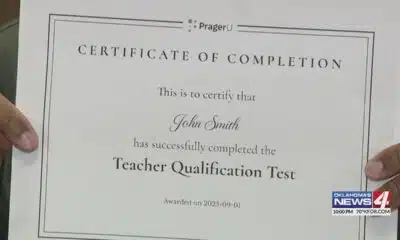(The Center Square) – On the call for the special legislative session, which began Monday, is the task of redistricting Texas’ 38 congressional districts.
The special session has begun for an initial 30 days to address 18 legislative priorities identified by Gov. Greg Abbott, including redistricting. The governor may extend the special session for another 30 days and amend agenda items at any time.
In Abbott’s call for the special session, he said the legislature must pass legislation “that provides a revised congressional redistricting plan in light of constitutional concerns raised by the U.S. Department of Justice.”
The legislature is also “working in lockstep on congressional redistricting legislation,” Lt. Gov. Dan Patrick and House Speaker Dustin Burrows said in a joint statement.
“Working with the House, the Texas Senate will move forward on redistricting to pass a legal, constitutional congressional map,” Patrick said.
“Texans place their trust in the Legislature to uphold fairness in the redistricting process, and we will continue to work closely together to fulfill this legislative responsibility,” Burrows said.
On Monday, Burrows announced he created the House Select Committee on Congressional Redistricting and appointed a bipartisan group of 21 members to serve on it.
They include state Reps. Cody Vasut as chair and Jon Rosenthal as vice chair and Reps. Josey Garcia, Charlie Geren, Barbara Gervin-Hawkins, R.D. “Bobby” Guerra, Ryan Guillen, Cole Hefner, Hillary Hickland, Todd Hunter, Christian Manuel, Will Metcalf, John McQueeney, Joe Moody, Katrina Pierson, David Spiller, Carl Tepper, Senfronia Thompson, Chris Turner, Terry Wilson and Gene Wu.
Patrick has yet to announce Senate committee members.
The Texas legislature has published information about the redistricting process, including about the Legislative Redistricting Board, public hearing process, judicial review and elections. Generally, redistricting takes place after a federal census. Because the last census was conducted in 2020 and the Texas legislature meets every other year during odd years, the legislature convened in 2021 to implement a redistricting plan.
That plan passed the legislature, was approved by the governor, and was met with lawsuits beginning in October 2021. It has been in litigation ever since.
The cases were consolidated into one case before the U.S. District Court for the Western District of Texas. This May and June, oral arguments were heard in the consolidated cases, LULAC v. Abbott and the court ordered the involved parties to submit post-trial briefs no later than September 3. The groups argue the redistricting plan violates the 14th Amendment and the Voting Rights Act.
As with other bills and committees, the select committee will hold public hearings to allow “citizens to present relevant testimony concerning the impact of existing districts, local preferences for district changes, communities of interest, local voting patterns, and other issues that the legislature may consider when redrawing district lines. The hearings also promote public awareness of the legislative redistricting process,” the legislature explains.
This year’s process includes the legislature proposing, voting on and potentially passing a redistricting bill. The governor may sign the bill into law, allow it to go into effect without signing it or veto it. If it fails to pass or is vetoed, the Legislative Redistricting Board would meet as required by the Texas Constitution. The LRB is comprised of the lieutenant governor, House speaker, attorney general, comptroller, and General Land Office commissioner.
If the redistricting plan is adopted, it would become effective for the following primary and general election, which would be in 2026. However, Democratic opposition is expected throughout the process and lawsuits are also expected as was the case in 2021.
If or when a redistricting law becomes effective, before elections are held in new districts, impacted counties are required to change their voting precinct boundaries. Candidates for state legislative office are required to have resided in the district they seek to represent for at least one year before the general election is held.












































